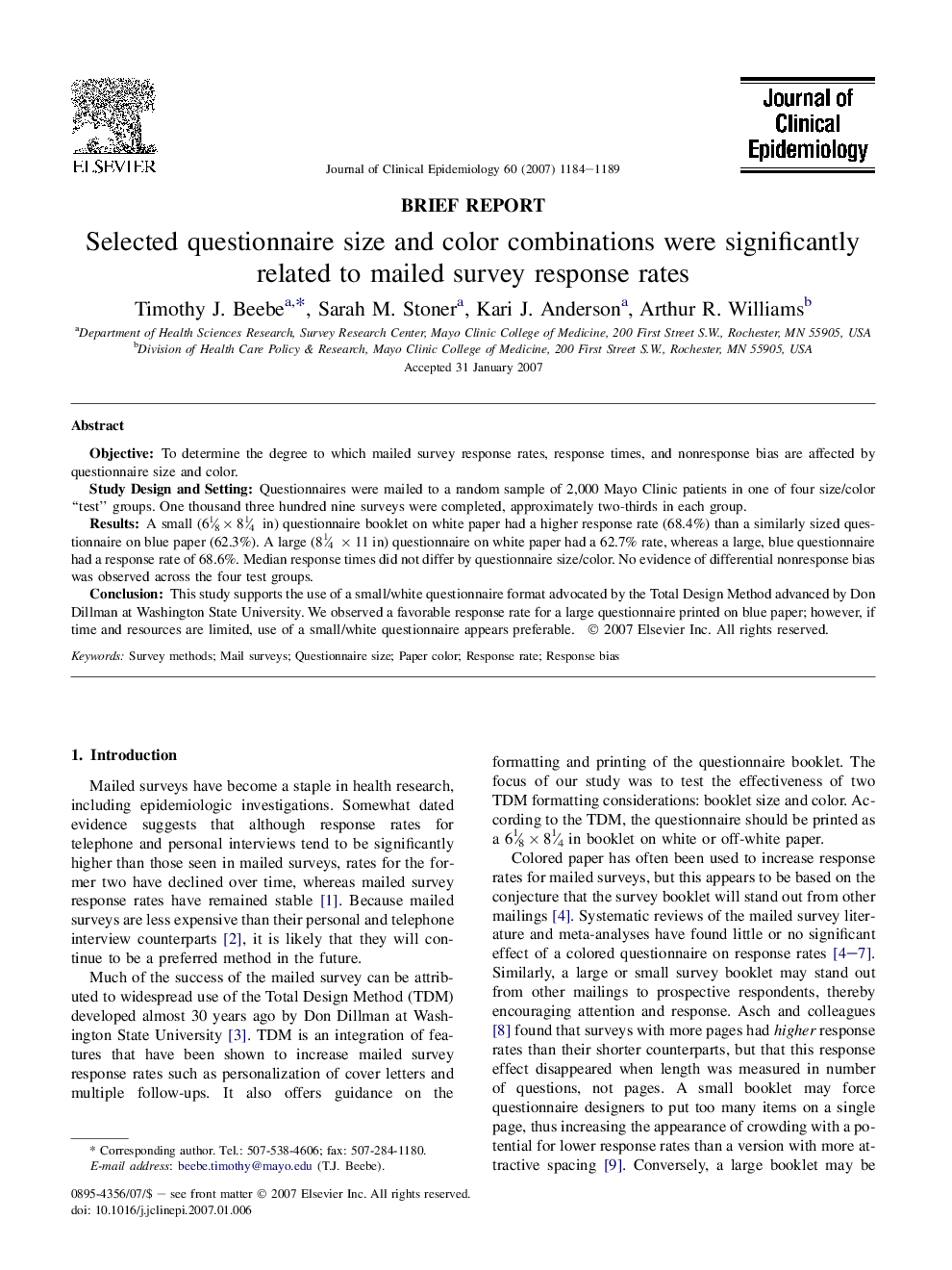| Article ID | Journal | Published Year | Pages | File Type |
|---|---|---|---|---|
| 1083461 | Journal of Clinical Epidemiology | 2007 | 6 Pages |
ObjectiveTo determine the degree to which mailed survey response rates, response times, and nonresponse bias are affected by questionnaire size and color.Study Design and SettingQuestionnaires were mailed to a random sample of 2,000 Mayo Clinic patients in one of four size/color “test” groups. One thousand three hundred nine surveys were completed, approximately two-thirds in each group.ResultsA small (6⅛ × 8¼ in) questionnaire booklet on white paper had a higher response rate (68.4%) than a similarly sized questionnaire on blue paper (62.3%). A large (8¼ × 11 in) questionnaire on white paper had a 62.7% rate, whereas a large, blue questionnaire had a response rate of 68.6%. Median response times did not differ by questionnaire size/color. No evidence of differential nonresponse bias was observed across the four test groups.ConclusionThis study supports the use of a small/white questionnaire format advocated by the Total Design Method advanced by Don Dillman at Washington State University. We observed a favorable response rate for a large questionnaire printed on blue paper; however, if time and resources are limited, use of a small/white questionnaire appears preferable.
